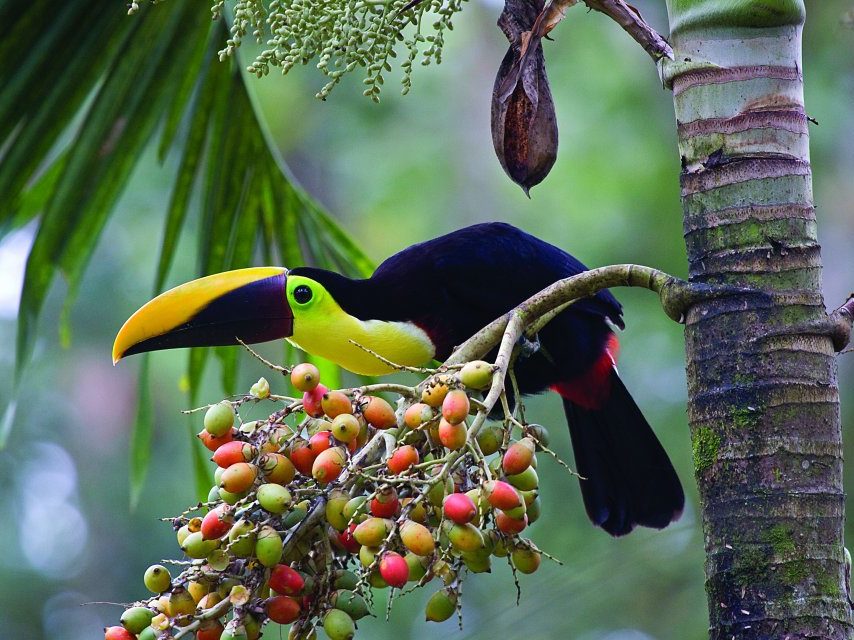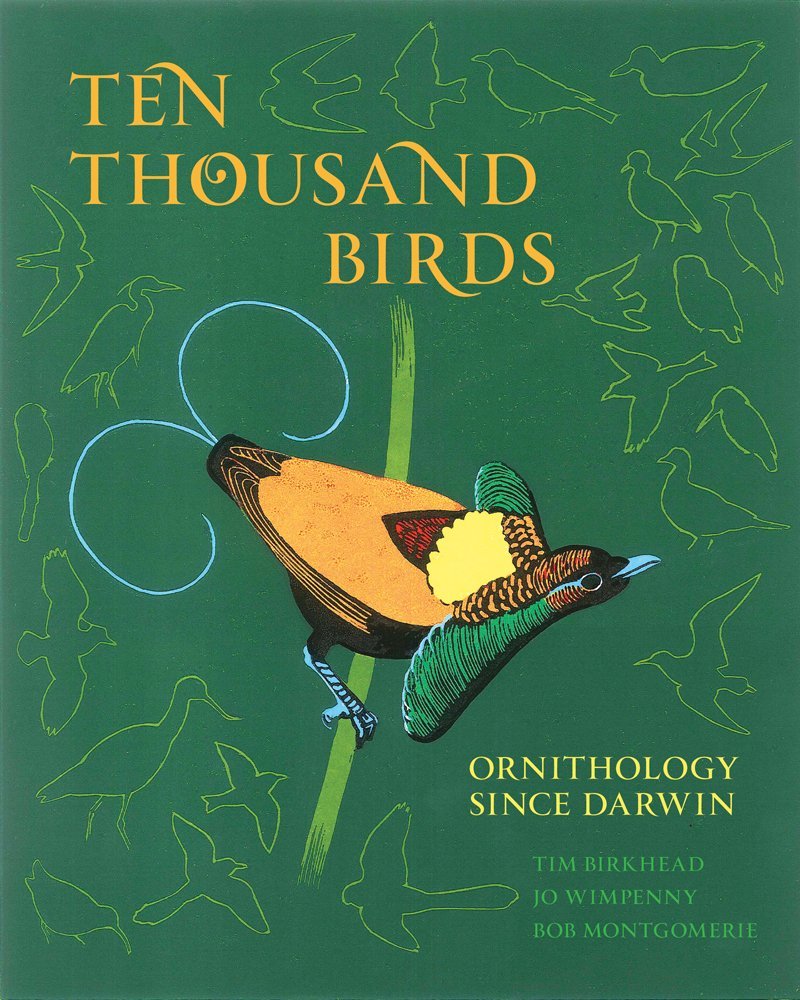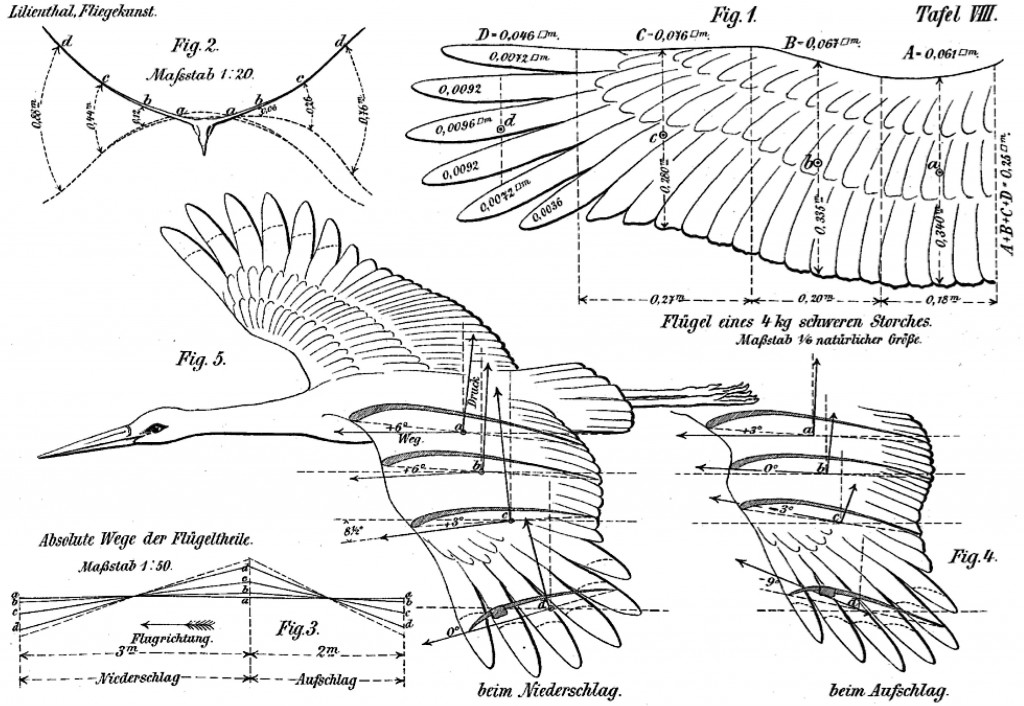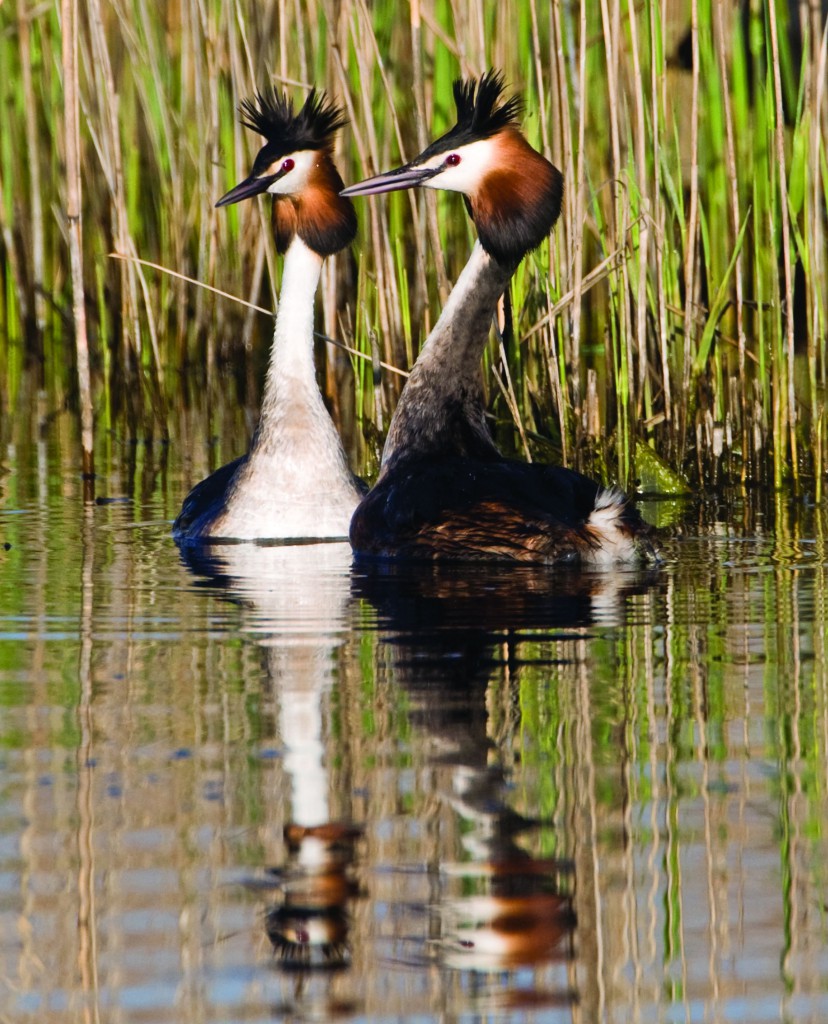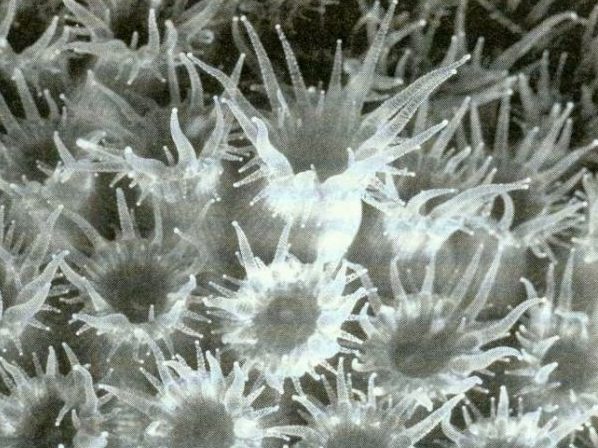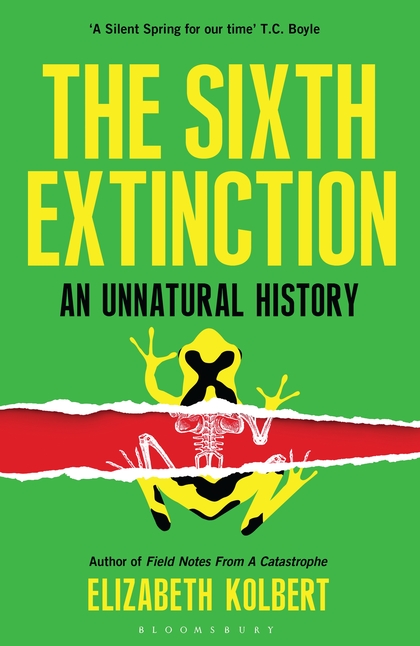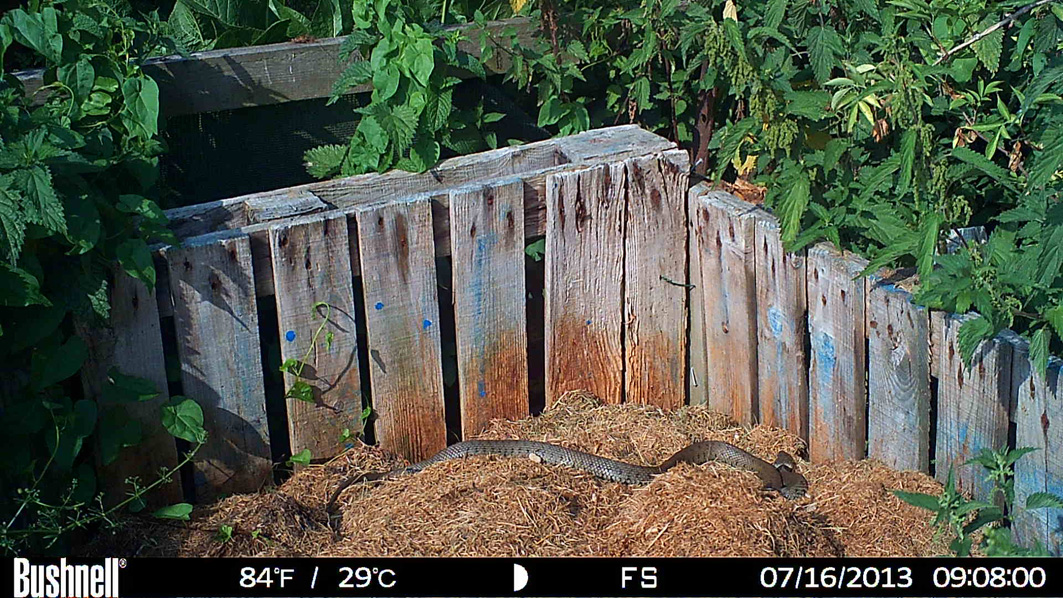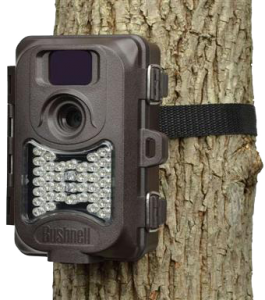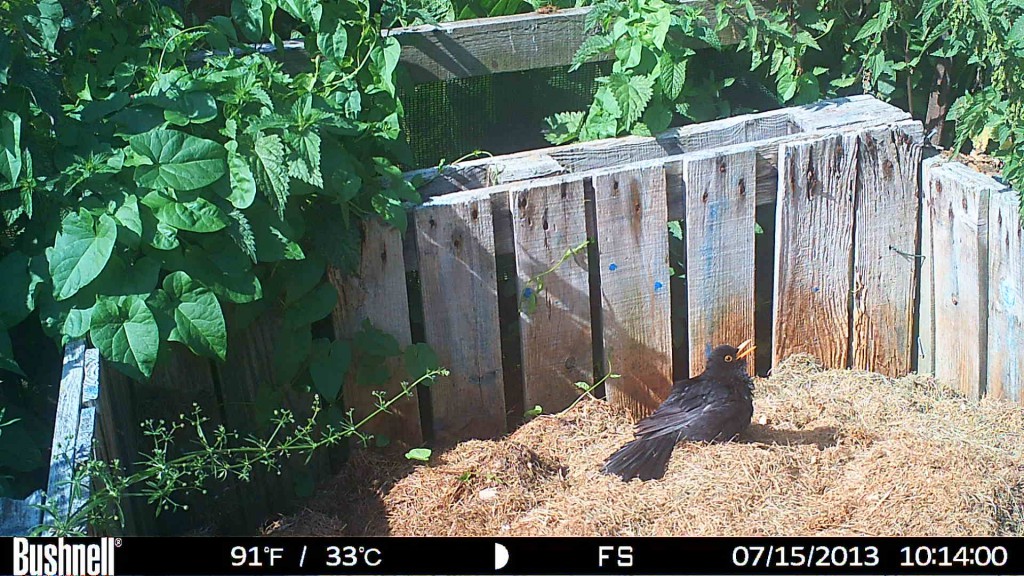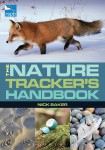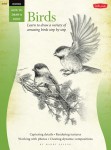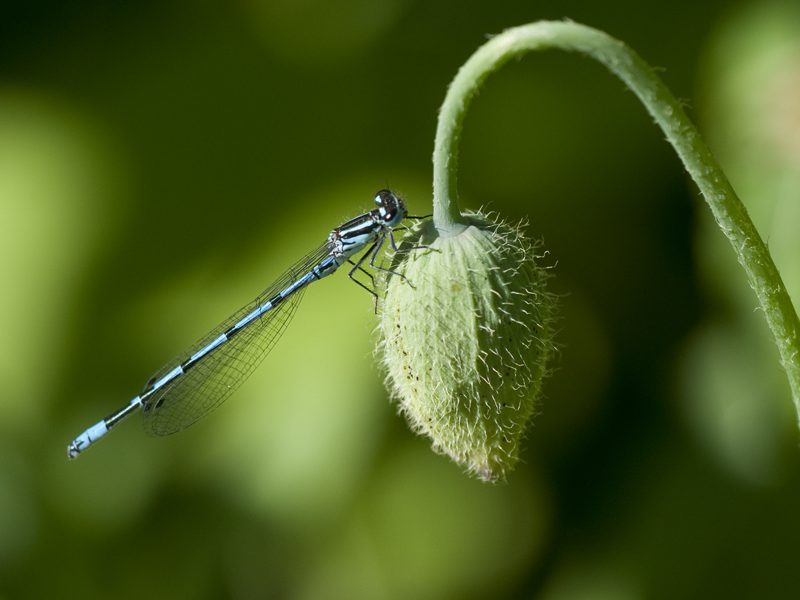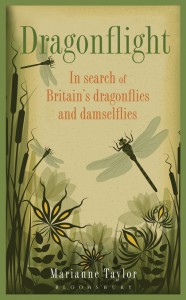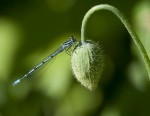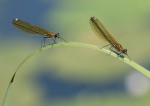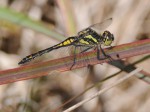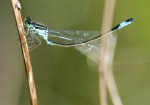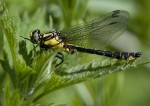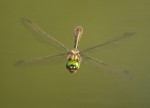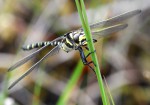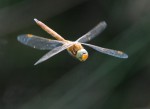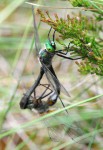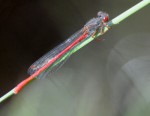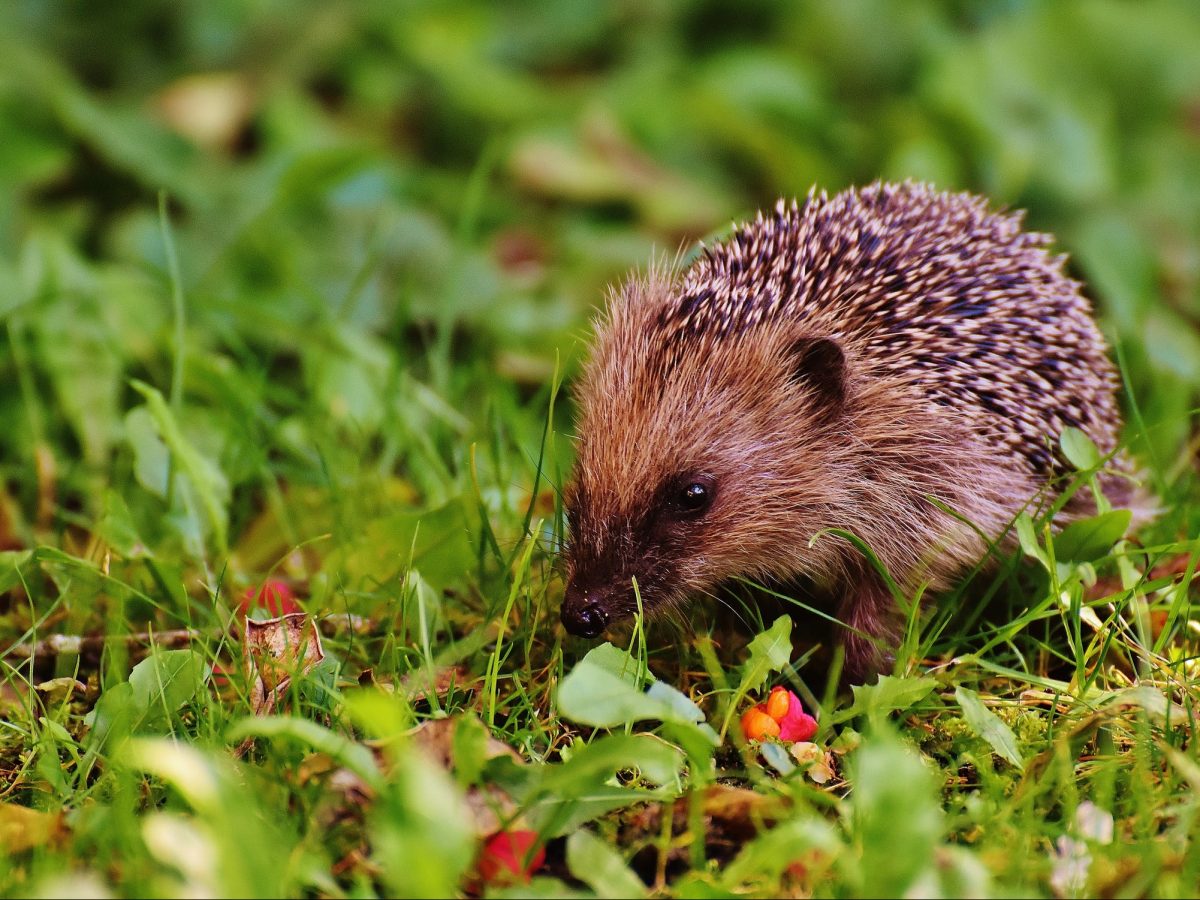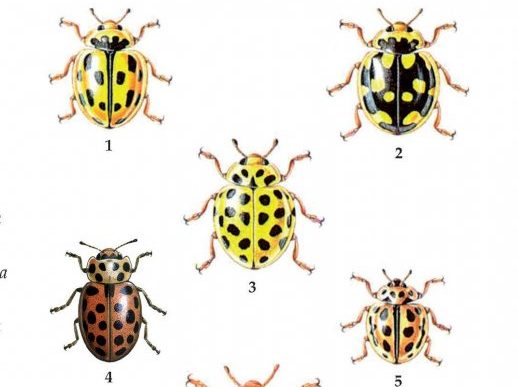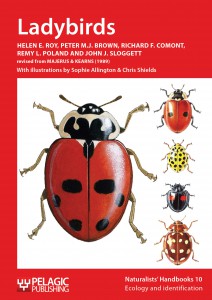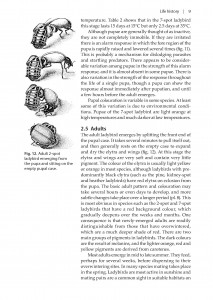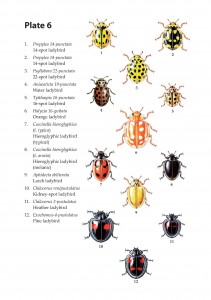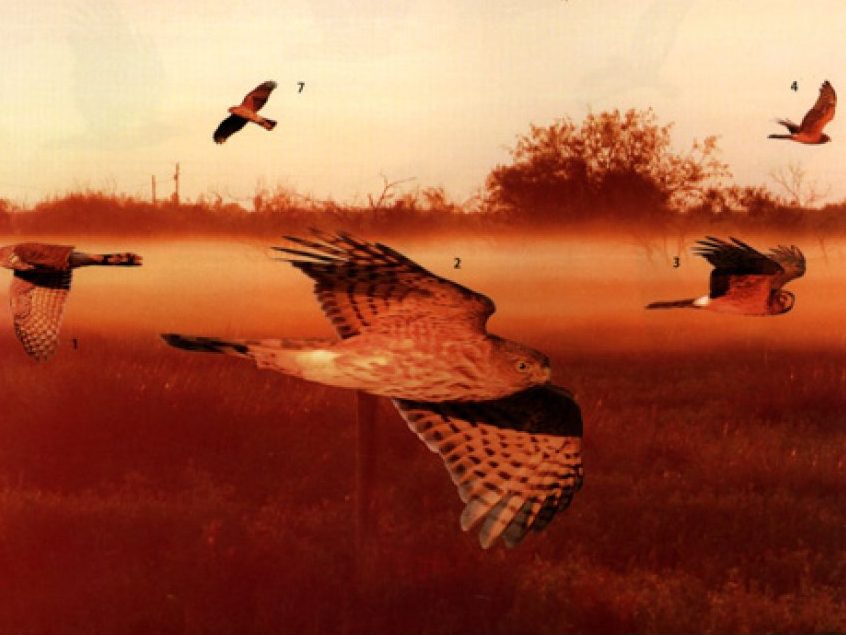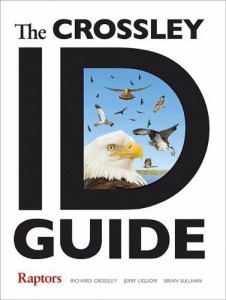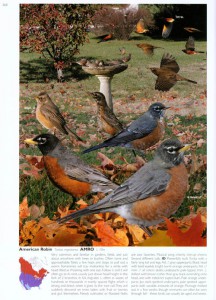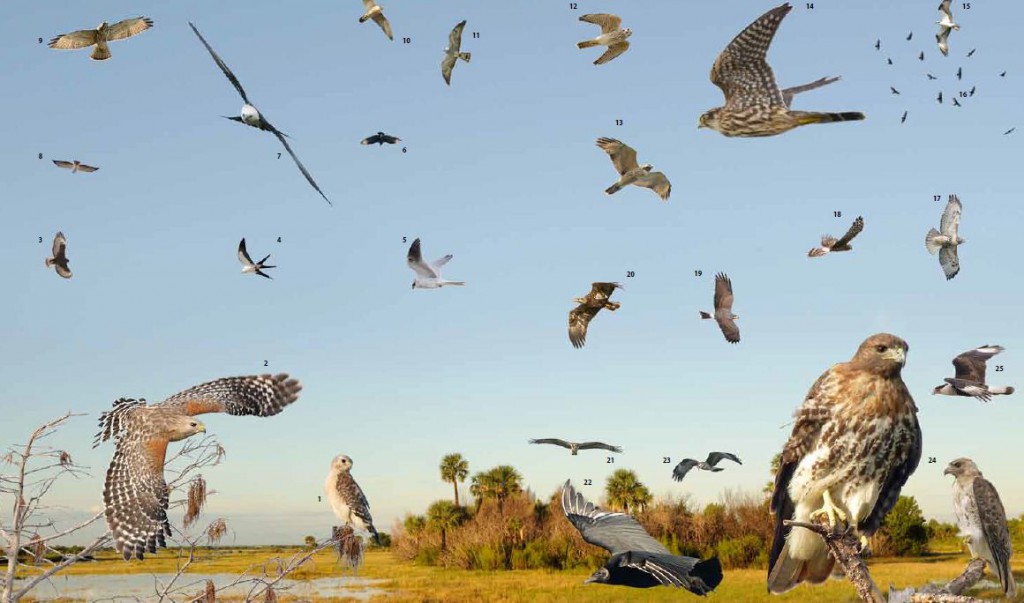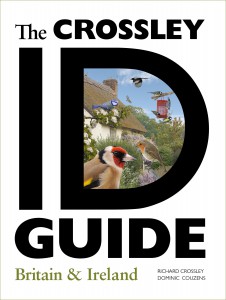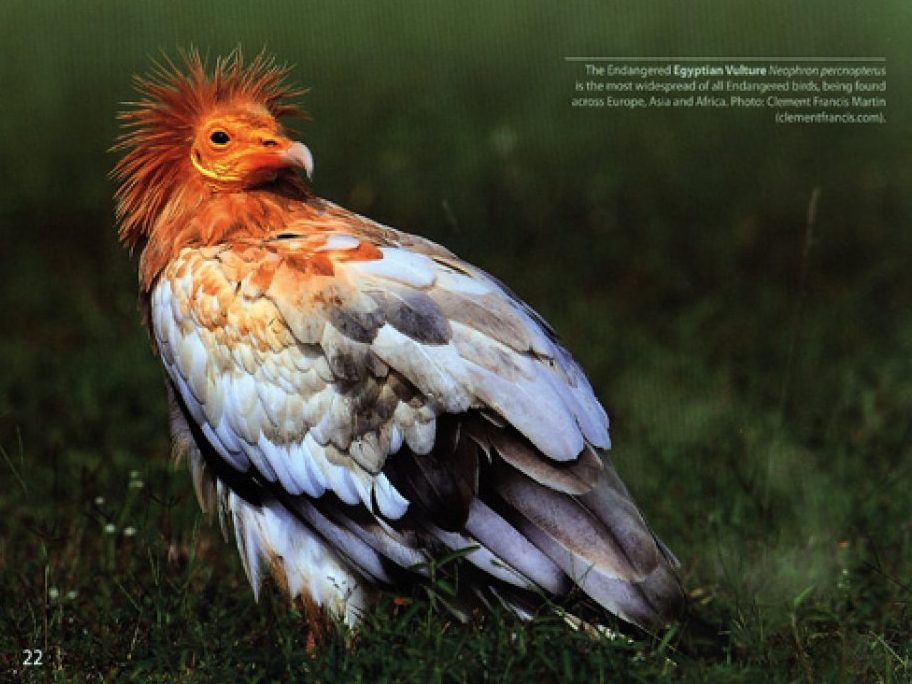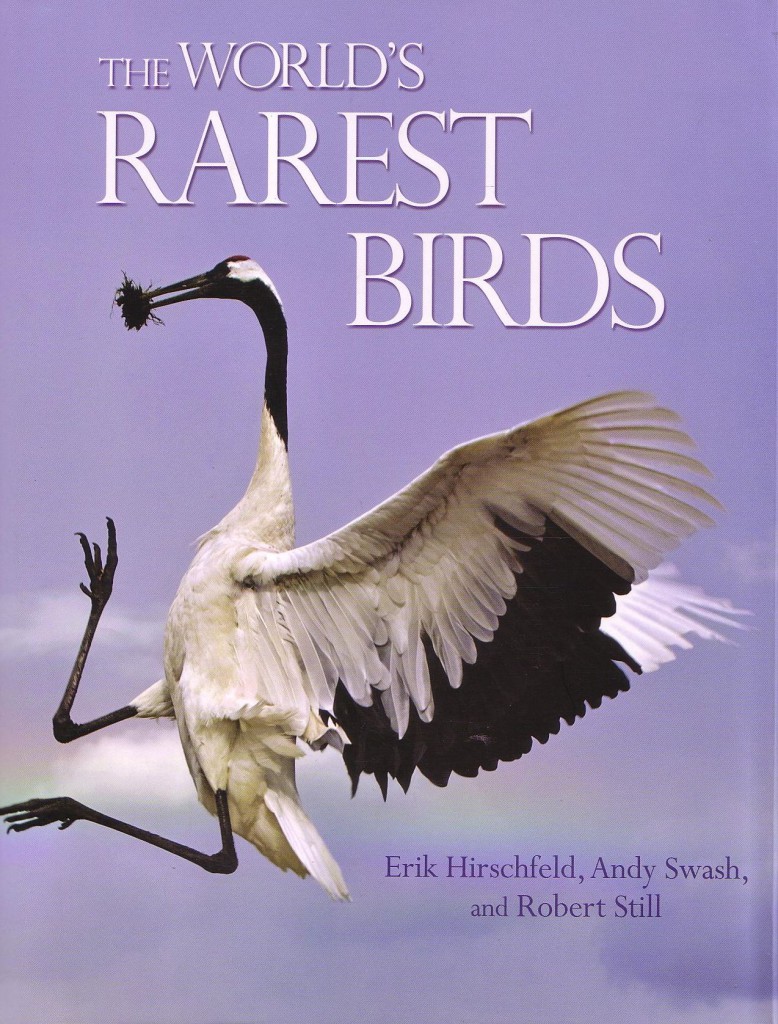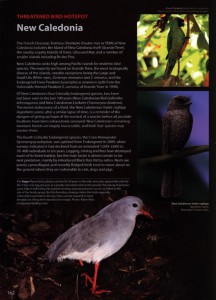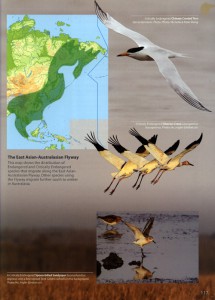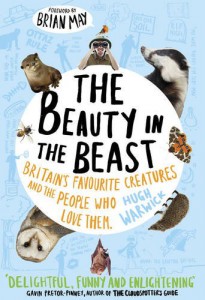 Hugh Warwick’s The Beauty in the Beast: Britain’s Favourite Creatures and the People Who Love Them started as Hugh’s participation in an art project – to get 100 people to each have a tattoo of one of the 100 species from the UK’s Biodiversity Action Plan. This led to a year-long journey to find and meet with kindred spirits: people who, like Hugh, have more than just a soft spot for a particular animal. What follows is an amusing romp through the sometimes eccentric underbelly of Britain’s wildlife enthusiasts.
Hugh Warwick’s The Beauty in the Beast: Britain’s Favourite Creatures and the People Who Love Them started as Hugh’s participation in an art project – to get 100 people to each have a tattoo of one of the 100 species from the UK’s Biodiversity Action Plan. This led to a year-long journey to find and meet with kindred spirits: people who, like Hugh, have more than just a soft spot for a particular animal. What follows is an amusing romp through the sometimes eccentric underbelly of Britain’s wildlife enthusiasts.
To start, I would like to ask you the same question you asked the animal ambassadors you interviewed for The Beauty in the Beast. Why hedgehogs? What has driven you to spend 25 years of your life studying hedgehogs, and to speak in public about your fascination with this creature?
I am an ecologist by training and my interest in hedgehogs started from a research project I was doing nearly 30 years ago up in Orkney. It became clear that there were very few people looking at what hedgehogs actually do – so to use an ecological term, there was a fairly empty niche for me to enter. Over the years the time I spent with hedgehogs also began to help me change my perspective on our relationships with the natural world – getting nose-to-nose with a real wild animal is important and something I advocate.
My enthusiasm has yet to wane, and that is transmitted when I talk. And because everyone (or at least nearly everyone) has a soft spot for hedgehogs, it enables me to start talking about complex ecological concepts in a very non-threatening way. So whether it is to do with wildlife management (hedgehogs as predators of birds’ eggs in the Outer Hebrides, potentially the cause of bird population decline etc), or how hedgehog numbers are being affected by badgers due to their ‘asymmetric intraguild predatory relationship’ (I love getting a class of primary school children chanting that… just imagine the faces of their parents when they repeat it at home!), the hedgehog provides an accessible way to start the conversation.
What does your writing process look like?
When I sit down to work I know what the big picture is going to be (or at least I have an idea of what I want) but have very little idea of the details. My research process – frequently involving a lot of long, recorded interviews that are then painstakingly transcribed – begins to clarify the form. And then I can start to write, using the initial plan as a skeleton and the research to flesh it out. The physical exertions of writing have surprised me – at the end of a good day I feel as exhausted as if I had been playing sport or dancing for hours! And sometimes the good day can be wonderfully brief – a splurge of 1,000 good words in a couple of hours. Though there are other days when the slightest sentence can feel like pulling teeth!
Was there any animal that you would have liked to feature in The Beauty in the Beast, but for which you could not find an ambassador?
The boring piddock. I really wanted to meet an expert in this amazing mollusc! There were so many other animals I wanted to write about – I have another book-full of ideas ready to roll if anyone wants to commission the sequel!
One of the things that struck me while reading this book is that most of the interviewees seem to shy away from publicity, with the exception, perhaps, of yourself and Miriam Darlington (author of Otter Country). Many seem content to intensively study their local patch. To what extent do their locally-focused efforts towards conservation, protection, or reintroduction filter into national or even international conservation work?
Most people are working with other organisations in some form, and even the most misanthropic are contributing data to various monitoring programmes. And that is crucial – love is all well and good, but I believe it is assisted by knowledge. Those who fear knowledge are missing out. In my interview with Professor David Macdonald from the University of Oxford, we ended up concluding that ‘It is a mistake to think that things retain their magic better if they aren’t understood.’
Also – to be honest – both Miriam and myself have books to sell, so we make a point of being ‘out there’. Most of the other people I met are either employed doing their work, or supported by other means. I have an advantage in that I really enjoy talking about nature – and it seems I am quite good at it (judging by the response of audiences so far … but I am not complacent!)
Organisations like the WWF and Greenpeace have done a tremendous amount of work to highlight the value and importance of biodiversity and species protection. Still, some people are frustrated with what might be considered the bogged-down bureaucracies of larger organisations. This in turn has led to the rise of splinter groups, such as Sea Shepherd and the Animal Liberation Front, who will resort to sometimes extreme measures to further the cause of the animals they seek to protect. These people could be construed as being animal ambassadors as well, yet they don’t feature in your book. What are your thoughts on their work, and was there a conscious decision to not approach such groups, or do you simply not move in these circles?
I have great respect for people who engage in non-violent direct action, in fact I made a film about it for the Quakers called Nonviolence for a Change. It looked at a wide range of people’s involvement – looking at why people get involved and how best to achieve your aims.
The purpose of The Beauty in the Beast was to look for enthusiasts who were also deeply embedded with research and observation. I have plenty of contacts in the world of more assertive campaigning, but that was not where I was interested in going. I think there is something very interesting to be written about the motivations behind the animal rights movement – what is it that helps form those points of view?
Also – I was very keen that my book was a gentle introduction to wider and more challenging political considerations. Better that 100,000 people read a gentle introduction to a pathway that might lead to a more rounded consideration of animal rights than to write a polemic that is read by 1,000 supporters of animal rights.
Your book deals with some very topical issues. Not least the chapter about badgers, which discusses at length the now-imminent large-scale culling of badgers. An earlier large randomised culling trial had unexpected side effects; by disturbing social groups, surviving members would move out and establish new groups, spreading bovine tuberculosis (bTB) to new areas. Are these new proposals any better, or will history repeat itself?
Interestingly, my fox man – Professor David Macdonald, head of the University of Oxford’s Wildlife and Conservation Research Unit – was the first person to describe the perturbation effect you mention in relation to foxes. It has now been seen to apply to badgers as well. I have yet to meet a wildlife ecologist who thinks that the cull is a good idea. The way to prevent perturbation overwhelming any benefits that might possibly accrue from fewer badgers is to ensure that 70% of the badgers in a restricted area are killed, repeatedly, and over a number of years. This will lead to a best-case reduction in the transmission of bTB of 16%.
Of the many thousands of badgers due to be killed, the vast majority will not have bTB because most badgers do not carry it (and also, remember, the badgers originally caught the disease from cattle). There are also concerns about the welfare of the culling process.
Oh, it makes me angry – I am an ecologist and I can see that there is no sense in this cull. The reason it is going ahead – well here is something I have just read: ‘A statement reported in the Veterinary record, made by Professor John Bourne in 2008 to the annual conference of the Association for Veterinary Teaching and Research Work aptly summarises the situation. He said “I think the most interesting observation was made to me by a senior politician, who said, ‘Fine, John, we accept your science, but we have to offer farmers a carrot. And the only carrot we can possibly give them is culling badgers’”’
There is, furthermore, a lot of resistance in society to this cull. Eradication of rodent pests such as rats seems more accepted, especially where public health profits. Are we being squeamish now that an iconic species is targeted, and should we accept this is a necessary evil to protect our cattle, or is labelling badgers as a pest unjustified and not scientifically sound?
I am not opposed to lethal control. I am opposed to ecologically illiterate politicians trying to win votes through killing badgers. And this is coming from someone who would love to see fewer badgers in the countryside at the moment as they are one of the reasons for the decline in hedgehog numbers (I should point out that badgers and hedgehogs would be able to live together fine in a less industrialised agricultural desert).
Badgers can be a pest – they get into crops and cause damage. They can spread bTB to cattle. But there is a landed class of people running the country who have a mindset so warped by privilege and entitlement that they believe their power should allow them to exterminate any of the lesser beings in their way. I am sure it is no fluke that the same government that is dismantling the welfare state is also happy to have buzzards killed to protect a few of the 35 million pheasants released each year in our very own glorified ‘canned hunt’.
What has happened since publishing The Beauty in the Beast? Have you met up with some of the people you have interviewed since?
I am in touch with many of my ambassadors. Sadly I attended the funeral of my wonderful badger man, Gareth Morgan. In fact I was in touch with all of them recently as the paperback is just out and I wanted to let them know – especially as the book now has a foreword from Brian May! That was a bit of a wonderful connection – I met him when I was compèring a large wildlife event in Surrey and after a chat he asked if I would like him to write something for the book. And he has been so generous with his praise – you can read his bit on my blog. He describes it as, “a gentle weapon of war against those who threaten the well-being and the very existence of our precious and entirely innocent wild animals.” And goes on to say that it is, “Gently wise, the facts are delightfully delivered with a good dose of humour. Warwick gives us every possible reason to fall in love all over again with the natural world; it is a love which, in the coming crucial months and years, will inspire us to fight for a compassionate world.”
If I had been sat down and told to write a puff piece for my own work I could not have been more fulsome!
As for what else I have been up to – I am being booked up already for next year for talks and I have been getting rather involved with opposition to the badger cull as well.
When we recently met, you mentioned writing a new book. Is there any news on this?
I have an idea that is a natural continuation from my first two books – but this time focussed more on the landscape. Hedgehogs – and most of the other animals I have written about – are suffering enormously from habitat fragmentation. It is not just the loss of habitat, but the loss of large, uninterrupted patches of habitat that is the issue. The simplest of examples is your own garden – if there is a wall or fence with concrete footings all around your garden then hedgehogs cannot get in … we have launched a great campaign to tackle this by the way, called Hedgehog Street.
But my next book will look at fragmentation and reconnection on a much wider scale than just our gardens. It will force us to view the landscape differently and encourage a more empathic relationship with the natural world (there, no small ambition!)

Buy a copy of The Beauty in the Beast
![]() Weatherproof bat detector for passive recording
Weatherproof bat detector for passive recording![]() Programmable recording schedule
Programmable recording schedule![]() Compact and discreet design
Compact and discreet design![]() Integrated GPS receiver
Integrated GPS receiver![]() One-touch unit configuration
One-touch unit configuration Features and components
Features and components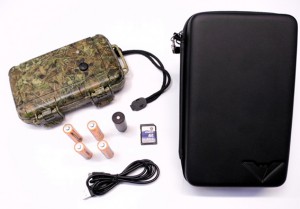 Powered by 4 x AA batteries; the unit should record for around 14 nights on one set of batteries and up to 30 nights with high quality lithium batteries. Supplied with padded case, wrist strap, 4GB SDHC card, 4 x AA batteries, a magnet for status checking and USB cable.
Powered by 4 x AA batteries; the unit should record for around 14 nights on one set of batteries and up to 30 nights with high quality lithium batteries. Supplied with padded case, wrist strap, 4GB SDHC card, 4 x AA batteries, a magnet for status checking and USB cable.
